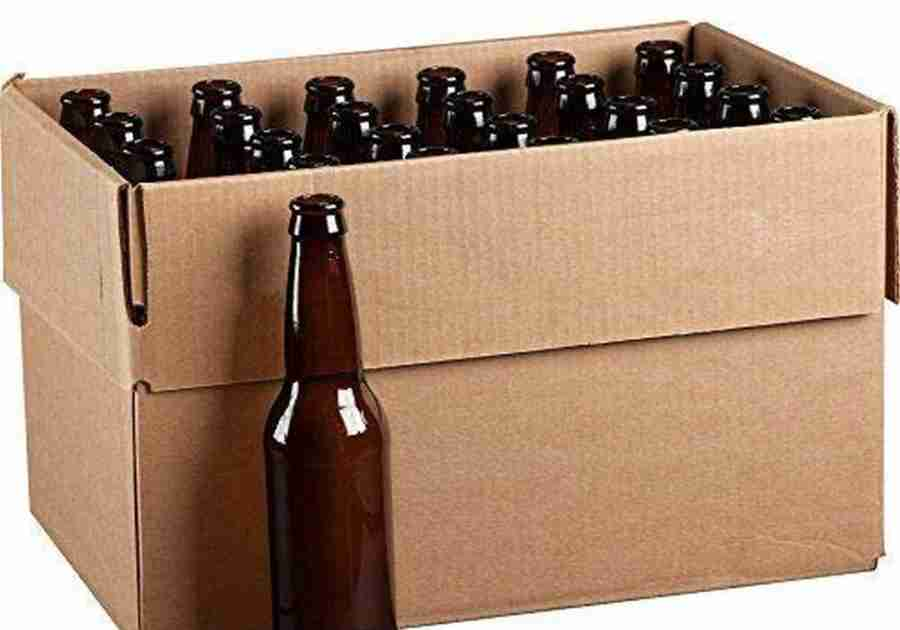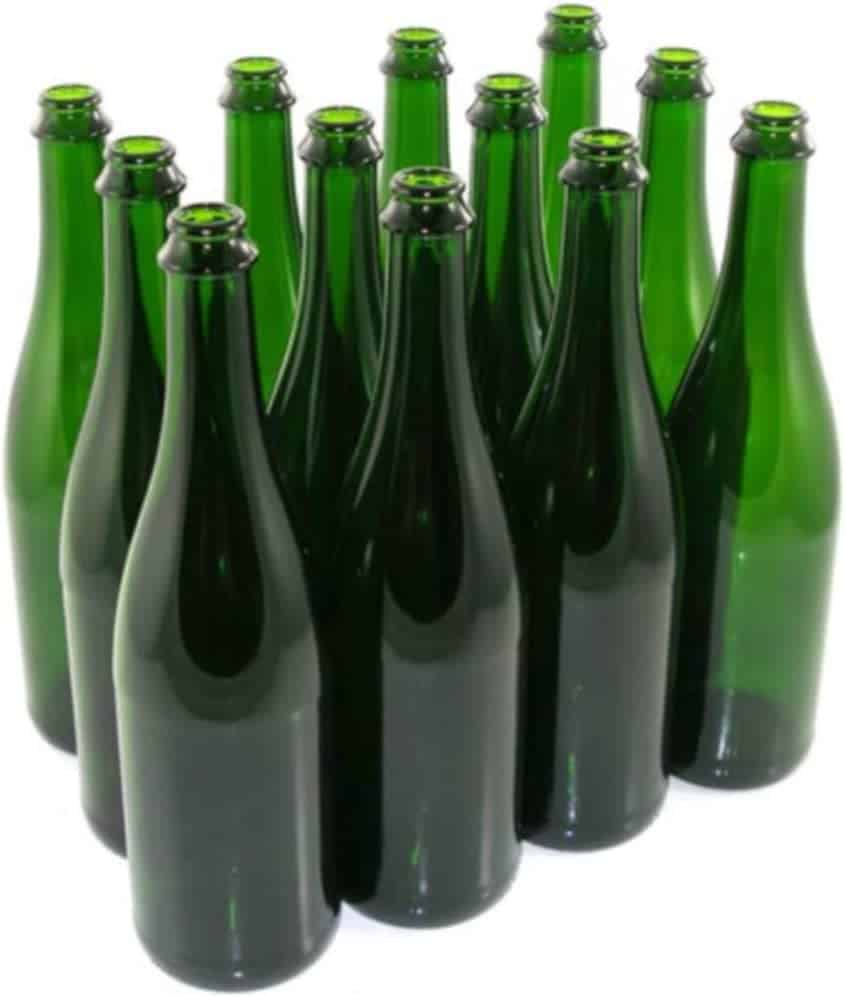You’ve done the unthinkable, you’ve actually managed to get through your fermentation all the way to the end and now it’s time to bottle. Now you’re hit with another question, should I carbonate my mead? When you’re talking about mead, you could do it either way..
The answer to should you carbonate your mead is maybe? The beautiful thing about mead is that it’s so versatile. It stands somewhere in between beer and wine in that you can make it either way. If you want to carbonate your mead, there’s usually two varieties:
- Low abv hydromels that are carbonated like beers in a bottle or can.
- High abv sparkling meads that are akin to champagne. These are carbonated in thick champagne bottles with specific corks to contain all the gas from exploding.
Whether you decide to carbonate your mead or not is up to you, but if it’s something you’re interested in, read on.
Dry Meads vs Sweet Meads
The type of mead that you are making should factor heavily into whether or not you should carbonate your mead. Dry meads can usually carbonate with little problem due to the nature of them having little to no sugar in them from the initial fermentation process. With a dry mead, the yeast was able to go through all the sugar in the must and turn it into alcohol. The process was stopped in this case due to a lack of sugar, thus when you reintroduce sugar back in, the fermentation should start up again giving you the ability to bottle condition.
With a sweet mead, the yeast has made so much alcohol that the environment changes to one that isn’t conducive to more fermentation. It’s called a sweet mead because there’s sugar left in the must that can’t be fermented because the yeast isn’t able to function anymore. Reintroducing more sugar into the bottle to bottle condition might not have any effect because there’s already too much alcohol.
Force Carbonation vs Bottle Conditioning
Part of the decision making process on whether you will want to carbonate or not may depend on whether you want to go through the extra steps. There’s two ways to carbonate a mead. They are forced carbonation and bottle conditioning.
Forced carbonation is when you take your mead and put it into a keg. You then hook up a co2 canister and force the co2 into the keg causing the mead to become carbonated. Force carbonated mead is really a great solution. It’s quick and easy, and there’s no danger of bottles exploding. The downside of course is that your mead is in a keg, and not everyone has a keg setup in their house.
Bottle conditioning is a carbonation process that takes place in your mead bottle naturally when there’s a little extra sugar added to the mix. You can either add the sugar directly to each bottle and siphon the mead into the bottles or you can add the sugar to the fermenter before bottling. Either way, the small amount of sugar added restarts the yeast in the mead inside the enclosed bottle. With the yeast restarted, it will turn that small amount of sugar into enough co2 to carbonate it inside the bottle.
The upside to bottle conditioning is that it’s just an easy step to add to your normal process in order to have carbonated mead. The downsides are that you have to be very precise with the amount of sugar you are using. You also should consider using strong bottles. Too much sugar, and you could have an exploding bottle on your hands, which if it doesn’t hurt you will leave a very sticky mess all over your floor. On the other hand, if you use too little sugar, your bottles won’t be carbonated enough.
Marking a Carbonated Hydromel
Hydromels are much like beer in that they are low abv (compared to traditional mead), easily drinkable, and perfect for carbonation. The light crisp taste they offer seems to have a synergistic effect with carbonation, so the two go hand in hand.
The abv on hydromels are somewhere between 4-8% abv. This is great because the smaller amount of alcohol leads to a potential less volatile situation in the case of an exploding bottle. Hydromels are a great mead to make if you don’t have any mead making gear like wine bottles or corkers. I like to use regular beer bottles or even cans if you can get access to a canner.
Typically I’ll do a hydromel with about a pound of honey per gallon with some type of fruit in the primary fermenter for color and flavor. The reason I’ll put it in the primary as opposed to the secondary is that I don’t necessarily want fermentation to start up in the secondary again. The process looks like this:
- Primary fermentation with fruit
- Rack to secondary
- Let clear
- Bottle with priming sugar
Making a Sparkling Mead
Making a sparkling mead is a very similar process to making a carbonated hydromel and the difference in name is negligible. The difference is that you should put your mead in a bottle designed to handle the high pressures of a sparkling mead. These are the champagne bottles that are just a little more thick than your standard wine bottles. You also should be using champagne corks and wire cages to ensure that the tops don’t blow off them either. You don’t want to be sitting at home one day and all of a sudden hear an explosion in your basement only to go down and see mead all over the place.
For a sparkling mead my process is to make a traditional style mead somewhere in the neighborhood of 12-14% abv. Then the process is basically the same for a hydromel except you put the mead in the champagne bottles so you would need specific gear for that.
Carbonating Backsweetened Mead
Carbonating backsweetened mead is a problem because in order to backsweeten with traditional sugars like honey or fruit, the sugars, you would have to stop the yeast from fermenting those sugars with potassium sorbate. If the yeast is stopped from working with sorbate, they won’t be able to ferment the priming sugar that you’ll put in the bottle to carbonate.
This leaves you with a few options for carbonating backsweetened mead. You either have to force carbonate with a keg, or you can use sweeteners to backsweeten that are not fermentable.
A couple options for non fermentable backsweeteners are:
- sucralose
- stevia
- erythritol
- xylitol
Xylitol is ok but I’ve found that it could cause some digestive issues. Stevia can be used but I find that it is super sweet and tastes kinda weird in a homebrew, but could be used very conservatively. I also think sucralose tastes weird so I don’t use it. I find that erythritol works best because it tastes most like sugar and doesn’t cause me problems.
Conclusion on Carbonating Mead
Ultimately it’s up to you whether you want to carbonate mead or not as you can make it both ways. If I’m making a low abv mead I’ll typically carbonate but if I’m making a traditional mead I typically won’t carbonate. The reason is that I’m really not that into champagne style sparkling mead, but maybe you are?



